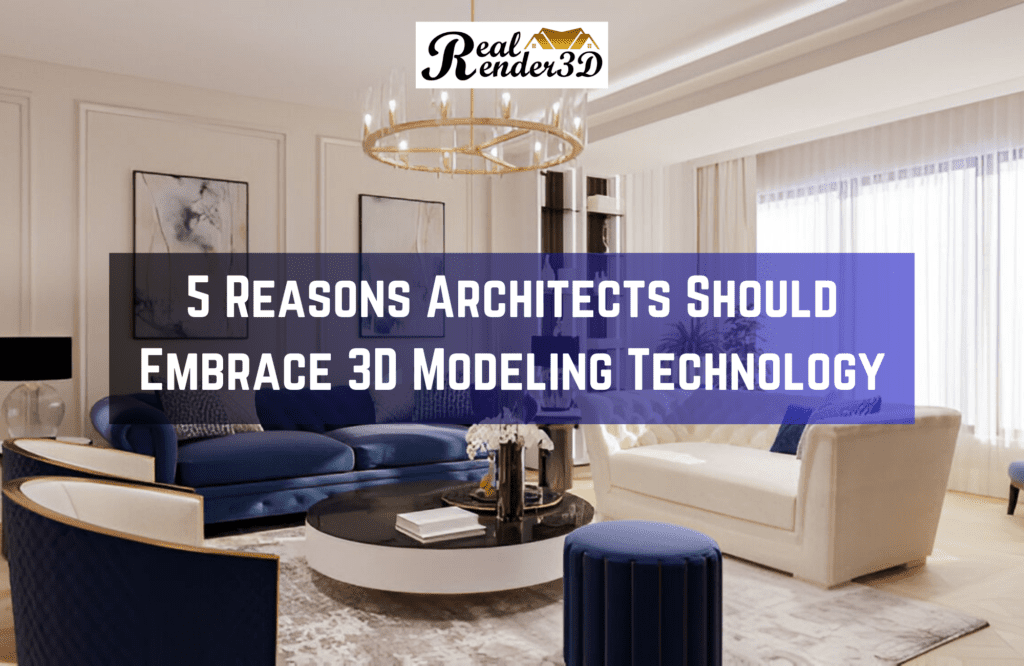Introduction
In the modern world of architecture, staying ahead requires embracing the latest technologies. One such innovation that has revolutionised the industry is 3D modeling technology. This powerful tool not only enhances the design process but also offers numerous benefits that can significantly improve the outcomes of architectural projects.
Enhanced Visualisation
One of the most significant advantages of 3D modeling is its ability to create realistic representations of designs. Traditional 2D drawings can often be difficult for clients to fully grasp. However, with 3D models, architects can present their designs in a way that clients can easily understand. This enhanced visualisation allows clients to see exactly what the final project will look like, making it easier to get their approval and enthusiasm for the project.
Moreover, using 3D rendering services, architects can create stunning images that showcase their designs in the best possible light. These realistic renderings help clients visualise the space, materials, and overall aesthetic, leading to better communication and satisfaction.
Improved Accuracy and Precision
3D modeling offers a level of detail and accuracy that traditional methods cannot match. Architects can create precise models that account for every detail, from the overall structure to the smallest components. This accuracy ensures that the final construction matches the original design, reducing the risk of costly errors and rework.
Furthermore, 3D models allow for better integration of different building systems. By simulating the entire construction process, architects can identify potential issues early and make necessary adjustments. This level of precision is particularly beneficial in commercial rendering, where complex projects require meticulous planning and execution.
Streamlined Communication
Effective communication is crucial in any architectural project. 3D modeling technology improves collaboration between architects, clients, and other stakeholders. With detailed 3D models, architects can clearly convey their ideas and design concepts, making it easier for clients to understand and provide feedback.
Additionally, 3D modeling tools enable architects to collaborate seamlessly with engineers, contractors, and other team members. By sharing accurate and detailed models, all parties can work together more efficiently, reducing misunderstandings and ensuring that everyone is on the same page.
Increased Efficiency and Productivity
Another significant benefit of 3D modeling technology is the increased efficiency it brings to the design process. Architects can quickly create and modify models, allowing for faster design iterations and improvements. This speed is especially valuable in property CGI, where time is often a critical factor.
By using 3D modeling tools, architects can streamline project management, reducing the time spent on revisions and ensuring that projects stay on schedule. The ability to quickly visualise changes and their impact on the overall design helps architects make better decisions and deliver projects more efficiently.
Support for Sustainable Design
Sustainability is becoming increasingly important in architecture. 3D models support sustainable design by allowing architects to analyse and optimise their designs for energy efficiency and environmental impact. By simulating different scenarios, architects can choose eco-friendly materials and design strategies that minimise the building’s carbon footprint.
Additionally, 3D modelling tools can help architects design buildings that maximise natural light and ventilation, reducing the need for artificial lighting and climate control. This focus on sustainability not only benefits the environment but also enhances the building’s appeal to environmentally conscious clients.
Conclusion
In conclusion, this technology offers numerous benefits that can significantly enhance the architectural design process. From improved visualisation and accuracy to streamlined communication and increased efficiency, this technology is an invaluable tool for modern architects.
Moreover, its support for sustainable design aligns with the growing demand for eco-friendly buildings. By embracing 3D modeling, architects can deliver better projects and stay ahead in the competitive field of architecture. In commercial rendering, accurate and realistic models can help secure approvals and investments. Ultimately, 3D modelling technology offers a transformative approach to architecture, making it an essential tool for any modern architect.
Frequently Asked Questions
1. What is 3D modeling technology?
3D modeling technology creates detailed, digital representations of physical objects, allowing for accurate visualisation and design.
2. How does 3D modeling benefit architects?
It enhances visualisation, improves accuracy, streamlines communication, increases efficiency, and supports sustainable design.
3. Can 3D modeling improve client communication?
Yes, it provides clear, realistic models that help clients understand and visualise designs easily.
4. Is 3D modeling useful for commercial projects?
Absolutely, 3D modeling offers precision and detailed planning, which are crucial for complex commercial projects.
5. How does 3D modeling support sustainable design?
It allows architects to analyse and optimise designs for energy efficiency and environmental impact.
6. What tools are commonly used in 3D modeling?
Popular tools include software like AutoCAD, SketchUp, Revit, and Blender for creating detailed 3D models.
Alex Smith is a content writer at RealRender3D, writing informative articles on 3D rendering, interior design, architecture, and related topics.
With over 15 years of experience at top UK architecture and interior design firms, Alex leverages his expertise to write engaging content educating readers on AEC industry trends and best practices.
Connect with Alex at alex@realrender3d.co.uk.
